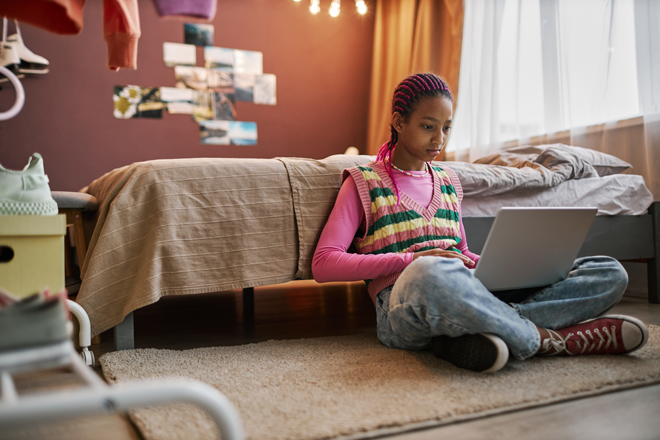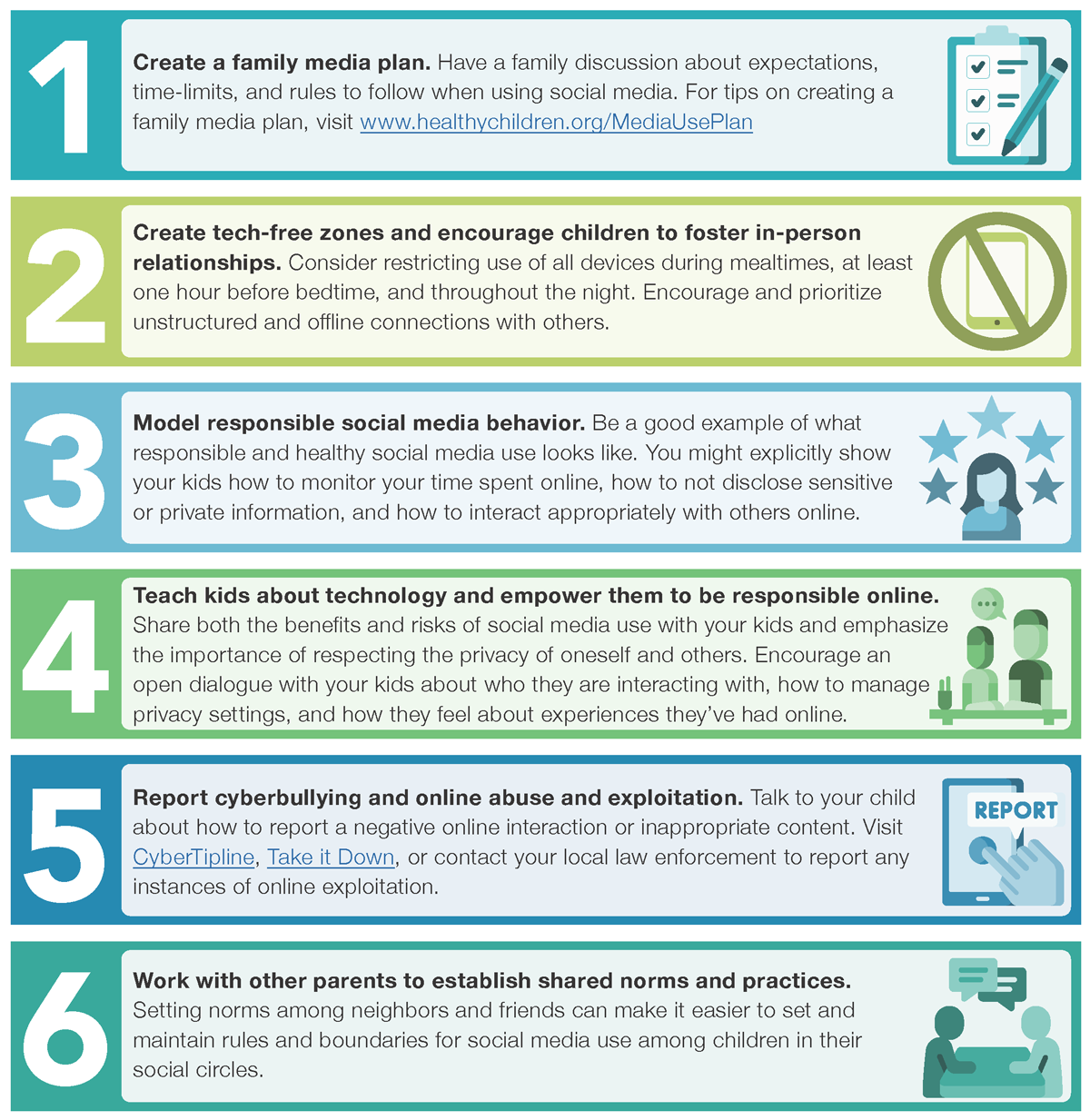
The popularity of social media is widespread and continues to rise, especially among youth. According to a recent general advisory report released by the Office of the U.S. Surgeon General, up to 95% of youth aged 13-17 regularly use at least one social media platform. And of those users, more than 1 in 3 report using social media “almost constantly.” This prompts questions for parents and researchers alike: How does social media use impact children? How can we best support and protect them from any harmful effects?
The data on the full and long-term impacts of social media use are still mixed. Researchers have demonstrated both negative effects of social media on youth mental health and well-being in addition to several positive outcomes when social media is used safely and appropriately. Below, we summarize the Surgeon General’s report findings and helpful strategies that parents and caregivers can use to support children and youth to maintain a healthy relationship with social media.
Social media reacts with the adolescent brain at a pivotal developmental period.
It is important to understand what’s going on in youths’ developing brains to understand the impact of social media. Between childhood and adolescent years, the following typically occurs:
- Risk-taking behaviors are high.
- Mental health challenges can emerge.
- Youths’ sense of self-worth is forming.
When widely accessible, harmful, and inappropriate online content converges with these developmental changes, the results can be toxic, especially for youth who are experiencing mental health challenges.

On average, youth spend enough time on social media to put them at risk for harmful effect.
A 2021 report found that students in grades 8-10 spent an average of 3.5 hours on social media per day, with 1 in 4 of these students spending 5+ hours per day. This is worrisome, due to the fact that 3+ hours of social media per day doubles the risk of poor mental health outcomes, including depression and anxiety.
Not all the effects of social media are bad.
Social media can also lead to positive outcomes for youth when used appropriately. For one, it can provide a supportive community to help build connections among youth who share identities, abilities, and interests. This is particularly true for marginalized youth, who may not have safe spaces to express themselves or explore their interests at home, in school, or in their communities at large.
Social media has shown especially promising benefits for the following youth populations:
- Adolescent girls of color, who report positive and identify-affirming content related to race across social media platforms.
- LGBTQ+ youth, who say they are more honest in their online interactions than in the real world, with a majority reporting that they have used social media to connect with other LGBTQ+ people within the last year.
Moderation is key.
Social media itself may not be as harmful as the amount of time spent interacting with it. In one 2018 study, limiting social media use to just 30 minutes per day over a 3-week period led to significant improvements for young adults who were experiencing depression and loneliness.
Parents and caregivers can support the appropriate and healthy use of social media.
There are immediate steps that parents and caregivers can take to protect and support children, including the following:
But protecting youth from the potentially harmful effects of social media does not fall onto parents and caregivers alone.
- Technology companies are responsible for ensuring the safety and appropriateness of the content and navigation of their platforms.
- Researchers are responsible for investigating the impacts of social media on youth mental health and well-being and providing evidence-based safeguards to put in place.
- Local, state, and federal legislators are responsible for implementing the safeguards and policies that will protect all children and adolescents.
By being aware of the benefits and harms of social media, and by vigilantly monitoring the use and content of online platforms, we can all contribute to the health and well-being of children and youth.
Click here to read the full report: Social Media and Youth Mental Health: The U.S. Surgeon General’s Advisory.
Topics: High school Internalizing behaviors Mental health Middle school/Junior high school

